Hello, fellow nature enthusiasts! If you love watching hummingbirds flit around your garden, then this article is for you.
In this piece, I’ll be sharing with you the 13 best annuals that attract these tiny, colorful birds.
These plants are not only beautiful but also provide a source of nectar that hummingbirds love.
Whether you’re a seasoned gardener or just starting out, read on to discover some of the best annuals to bring hummingbirds to your yard.
| Image | Name |
|---|---|
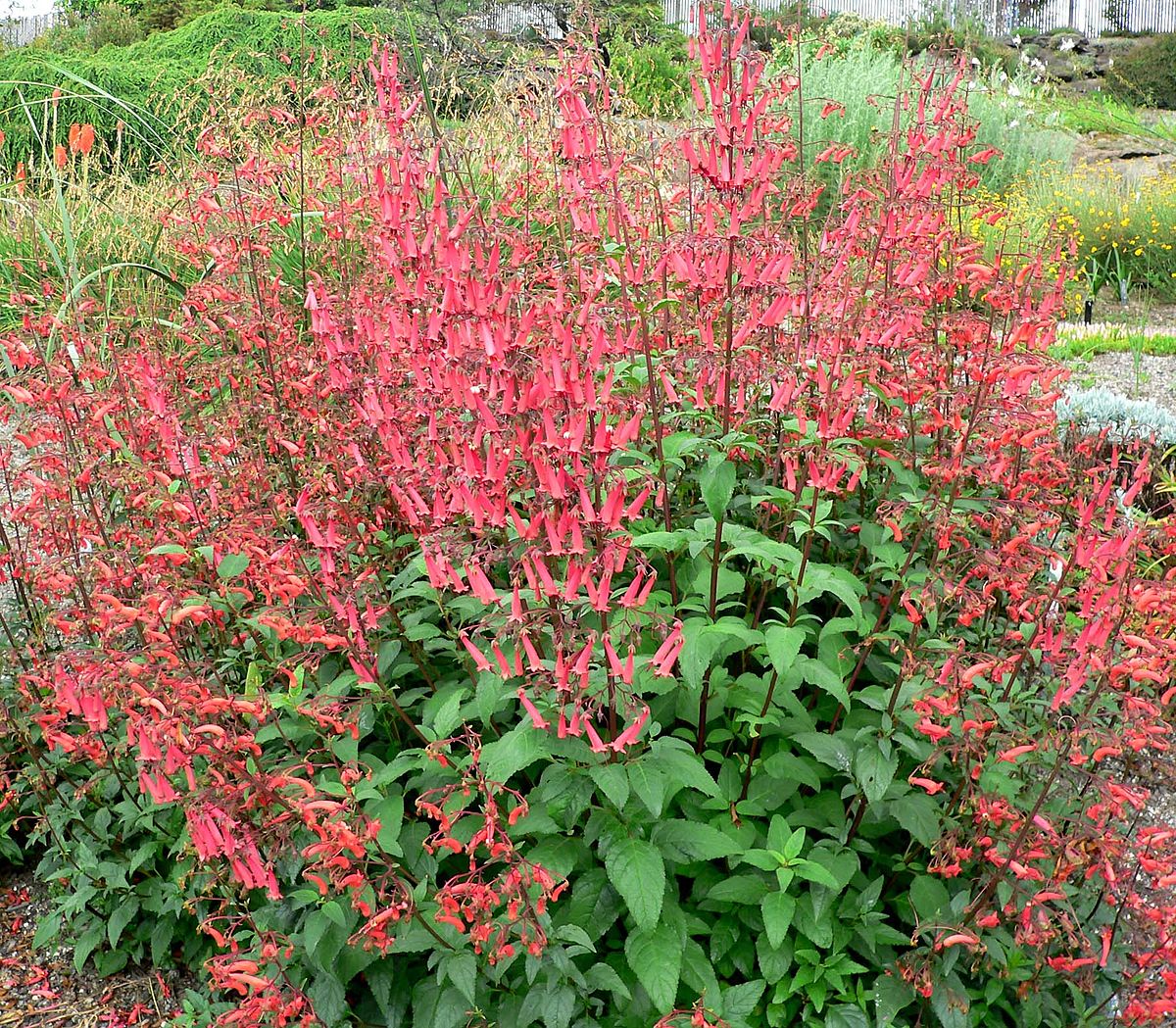 | Cape Fuchsia |
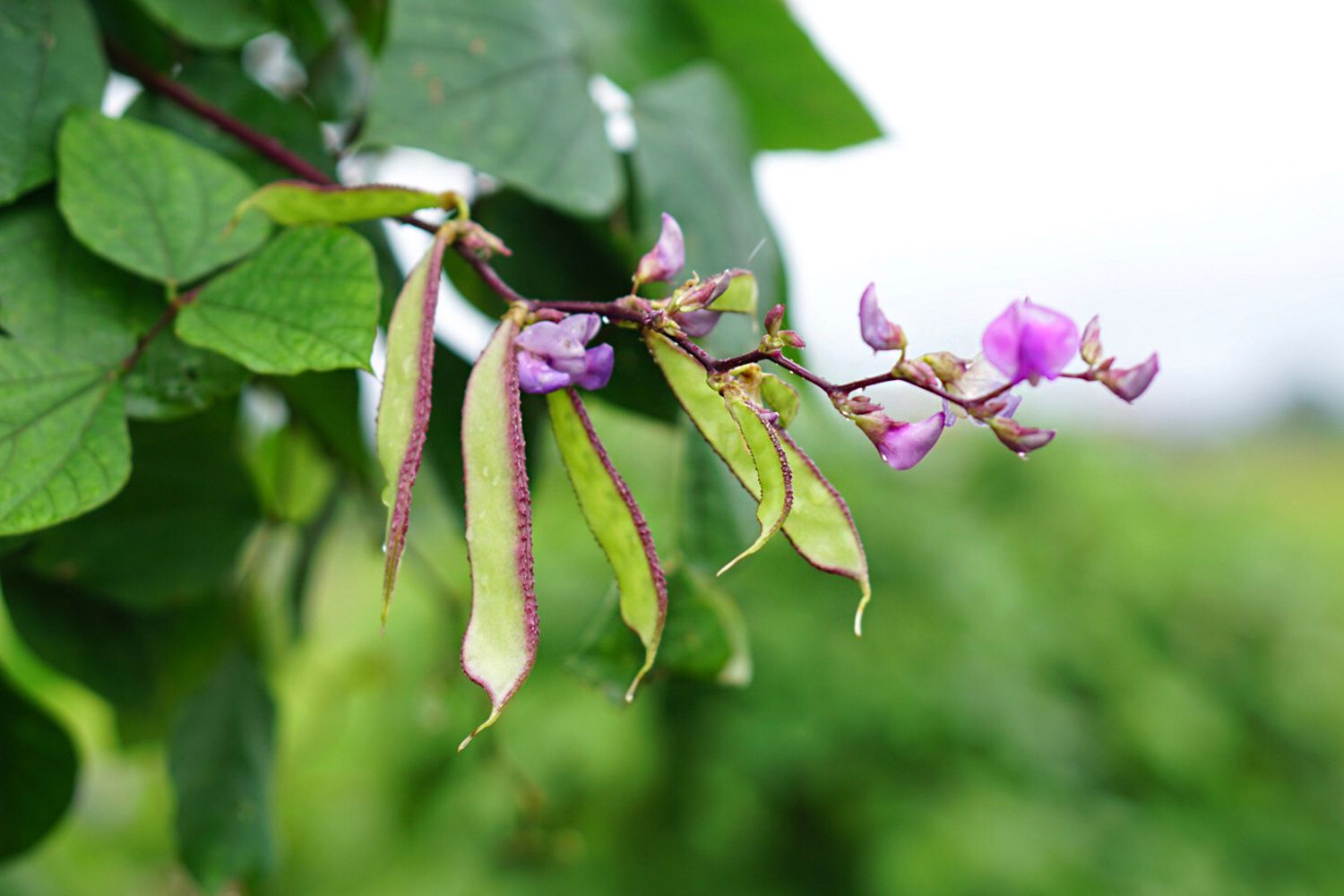 | Hyacinth Bean |
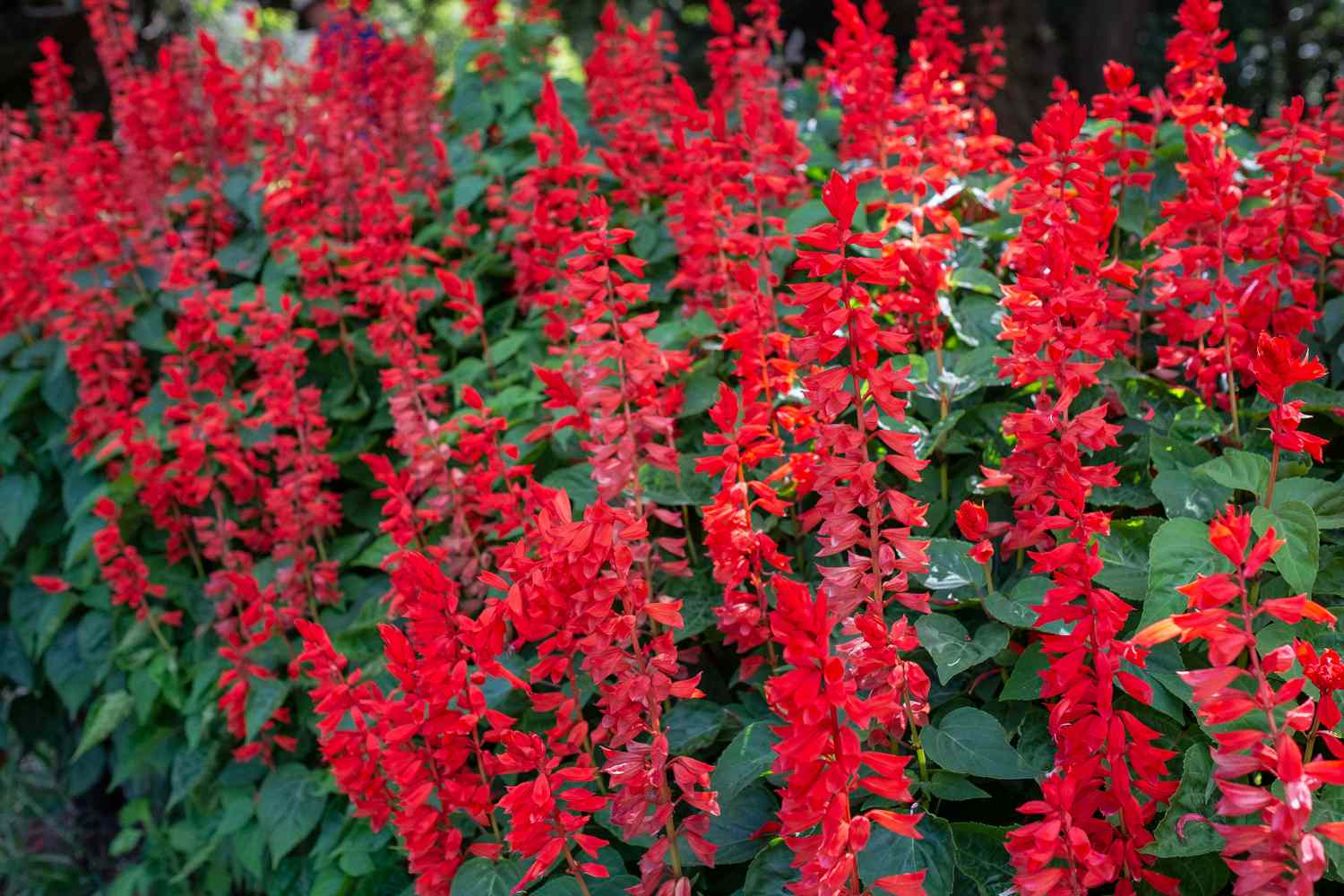 | Salvia |
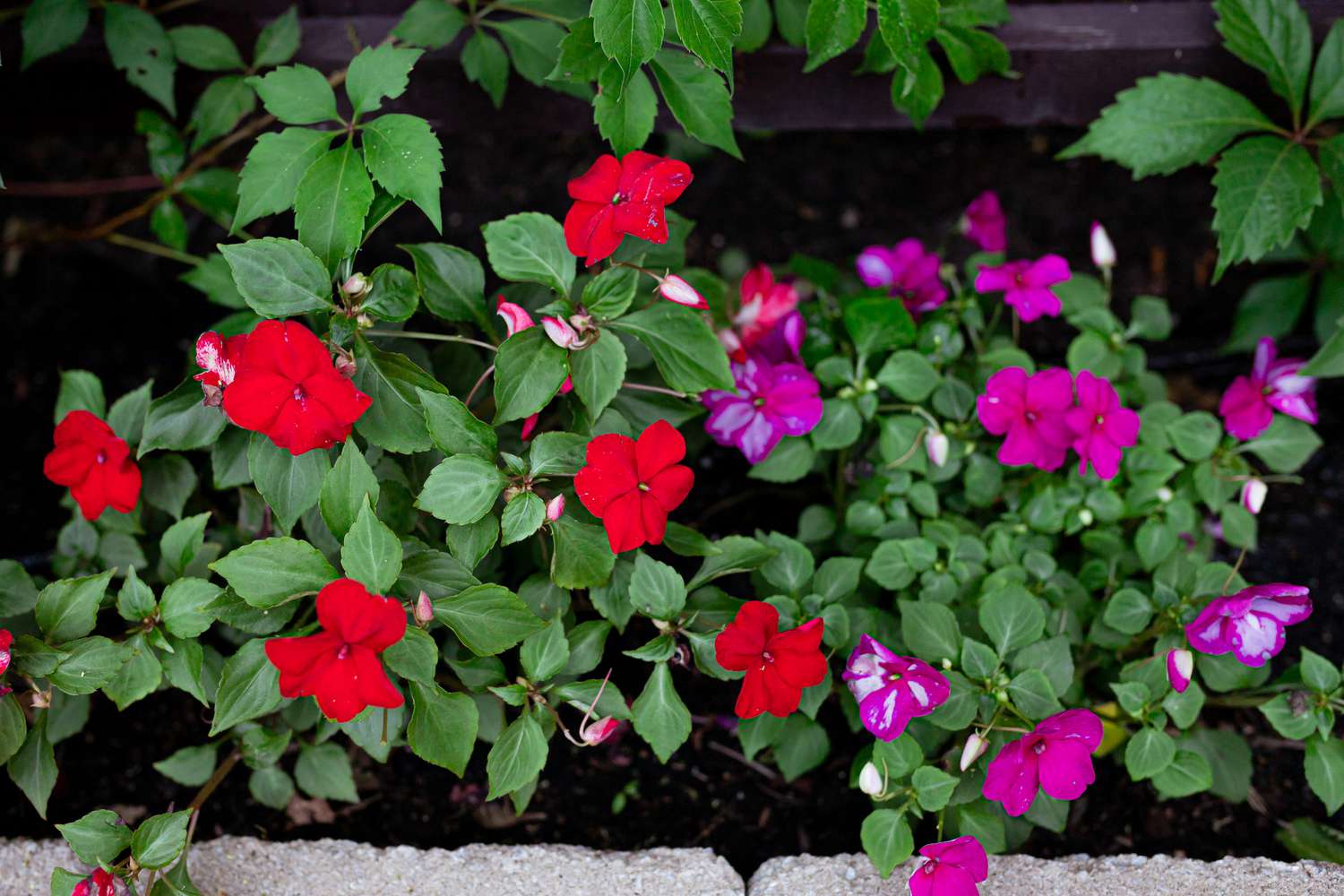 | Impatiens |
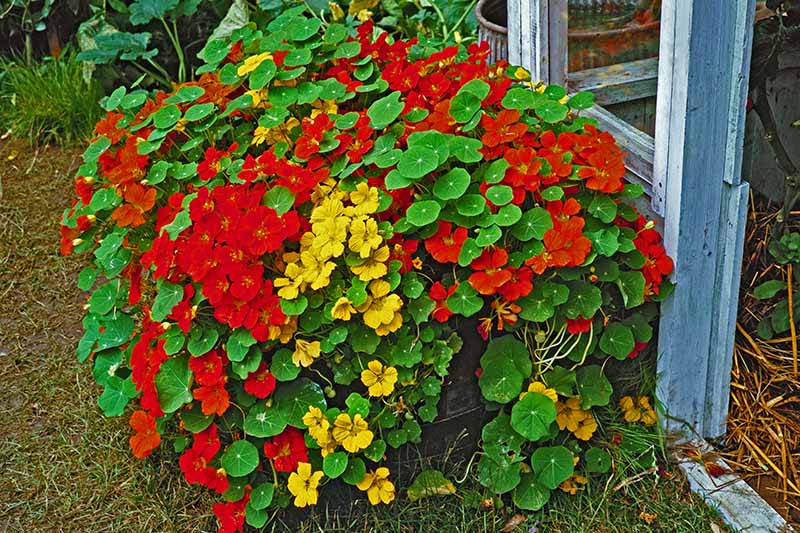 | Nasturtiums |
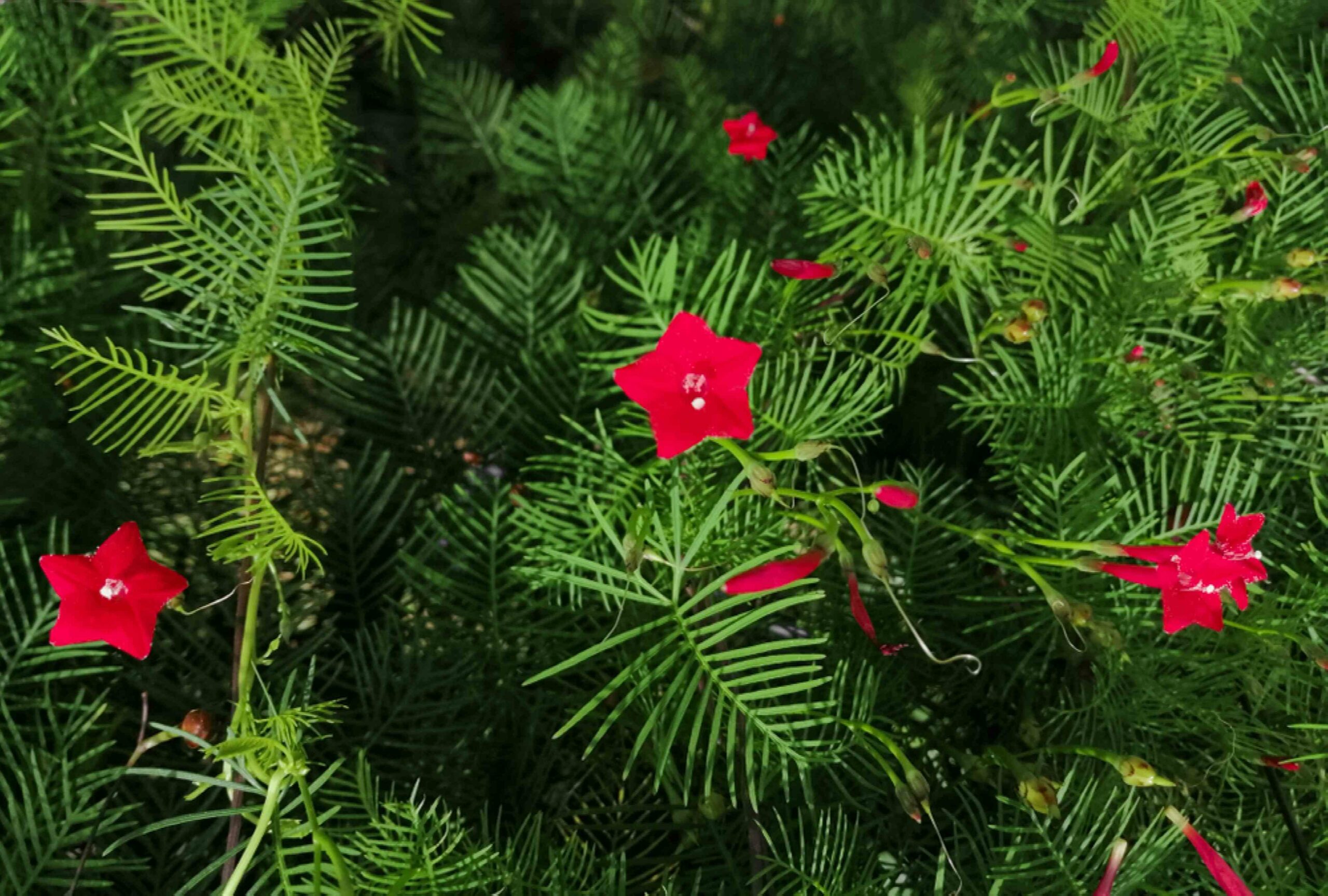 | Cypress Vine |
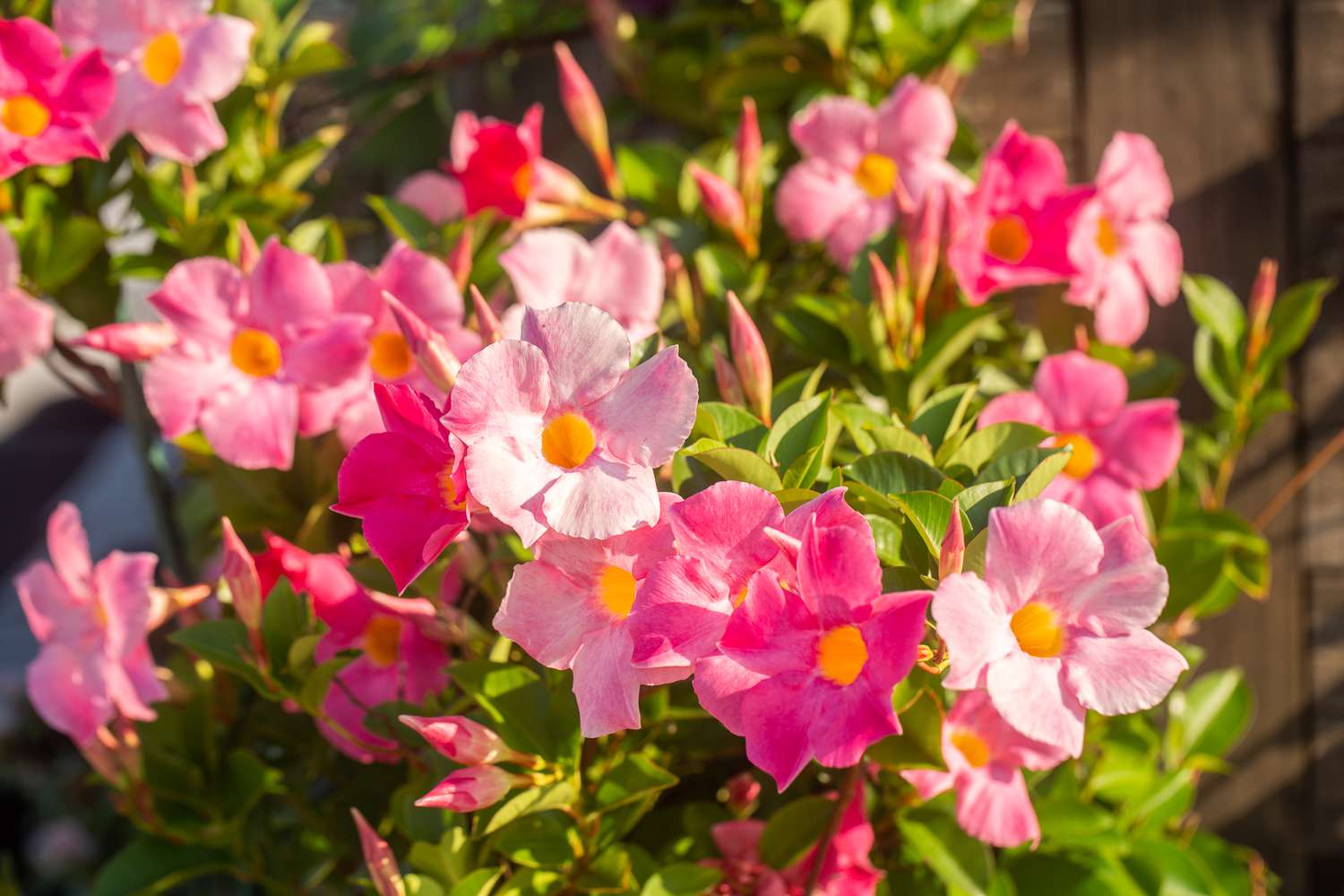 | Mandevilla |
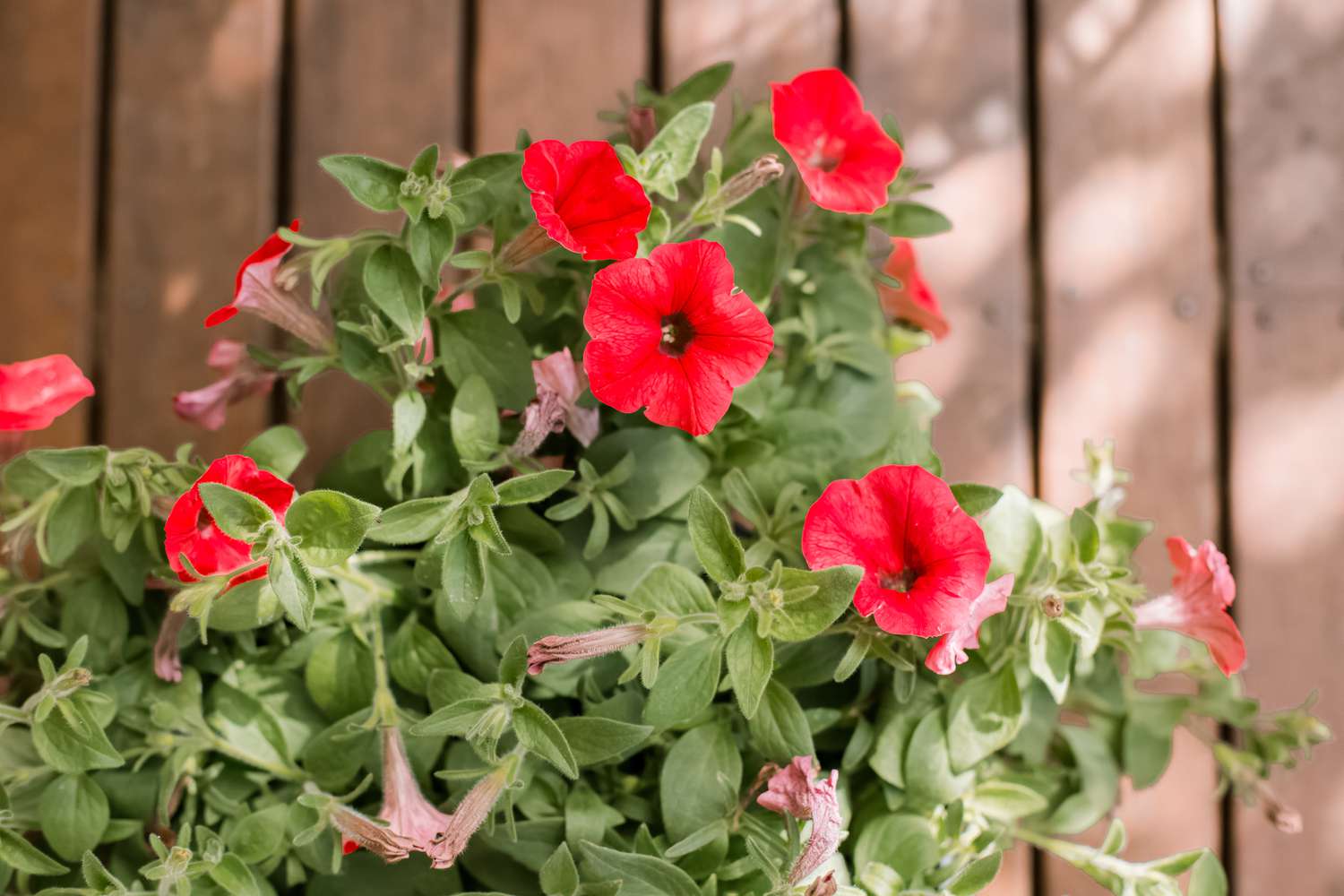 | Petunias |
 | Canary Creeper |
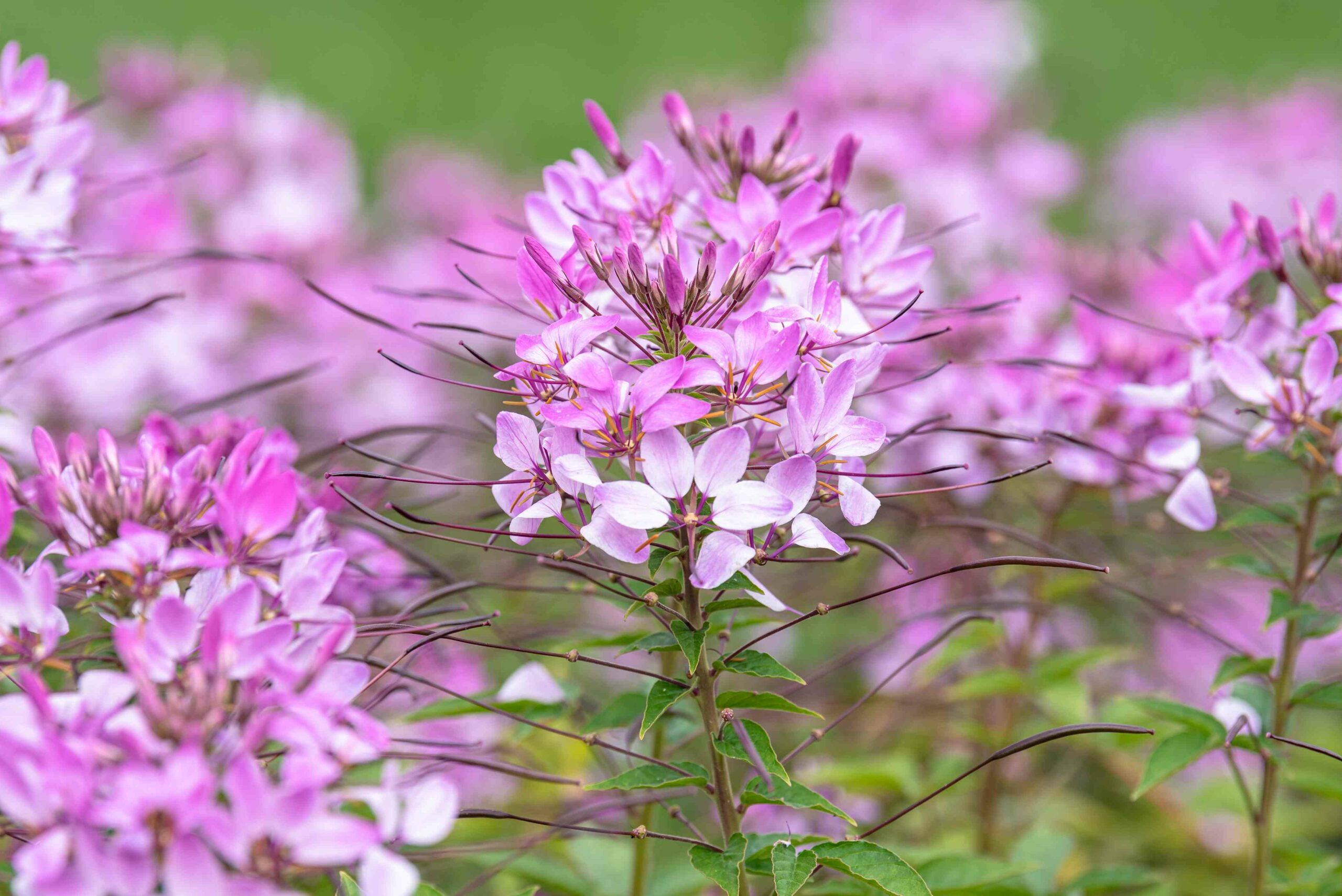 | Cleome |
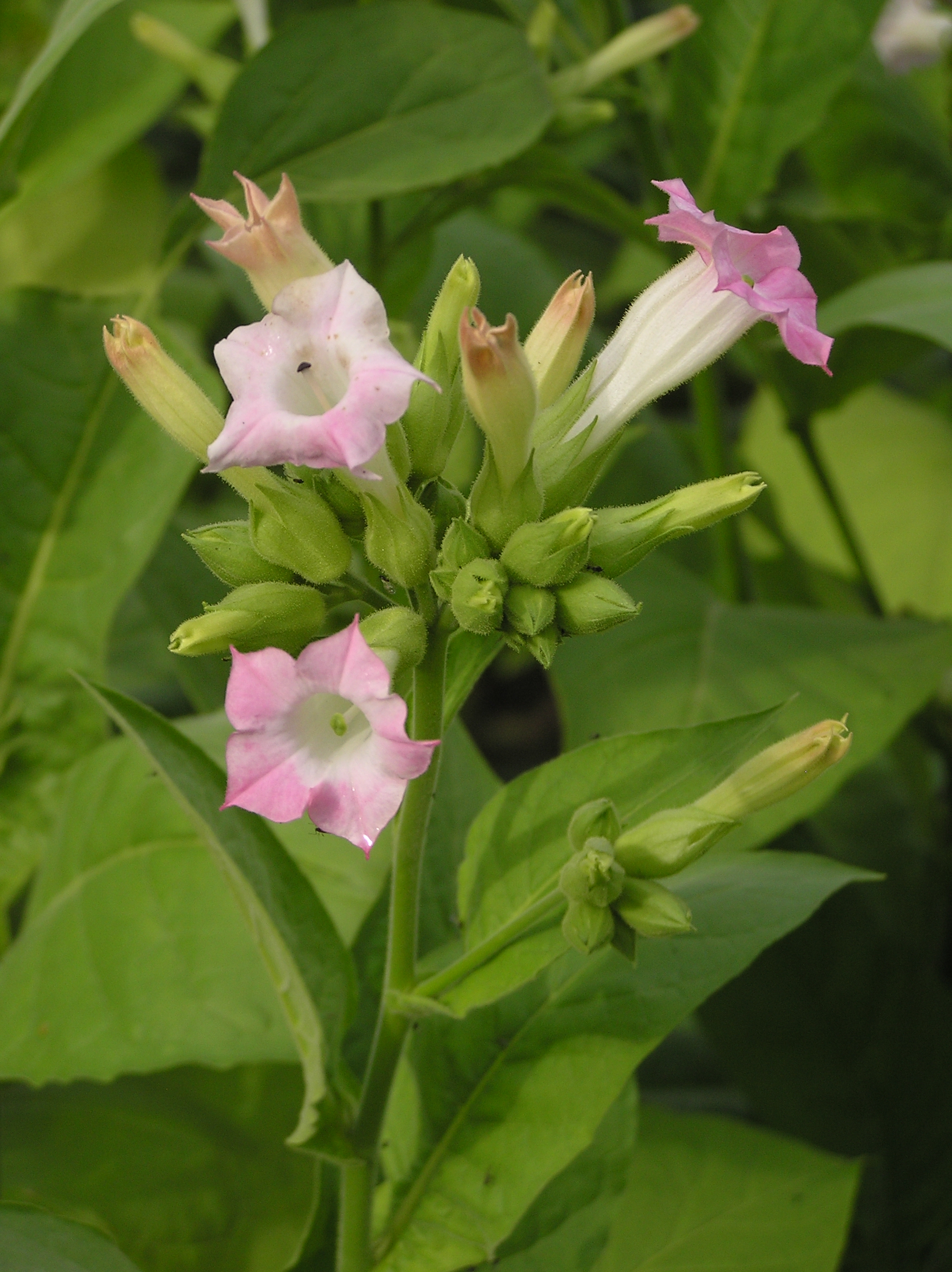 | Flowering Tobacco |
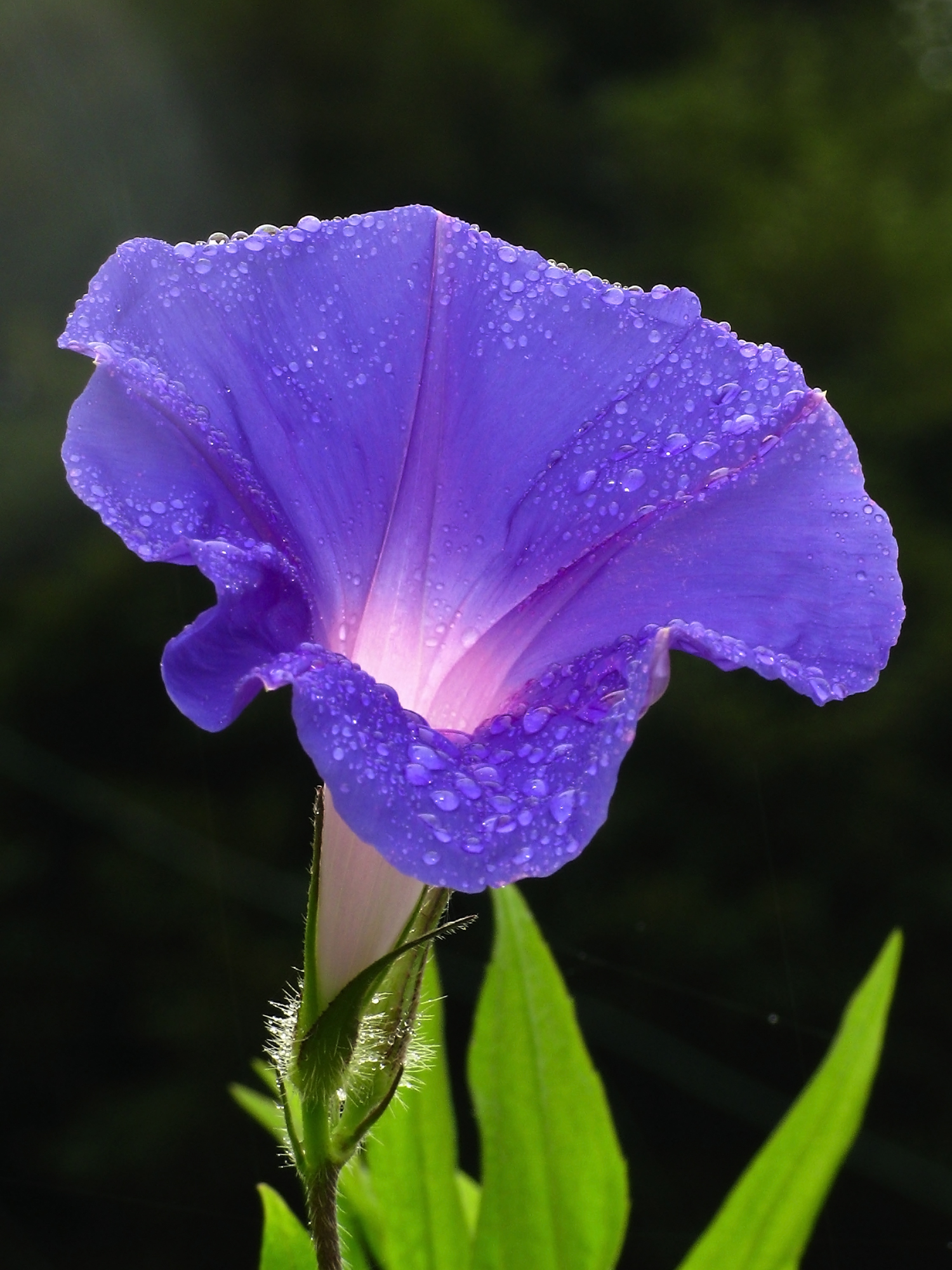 | Morning Glory |
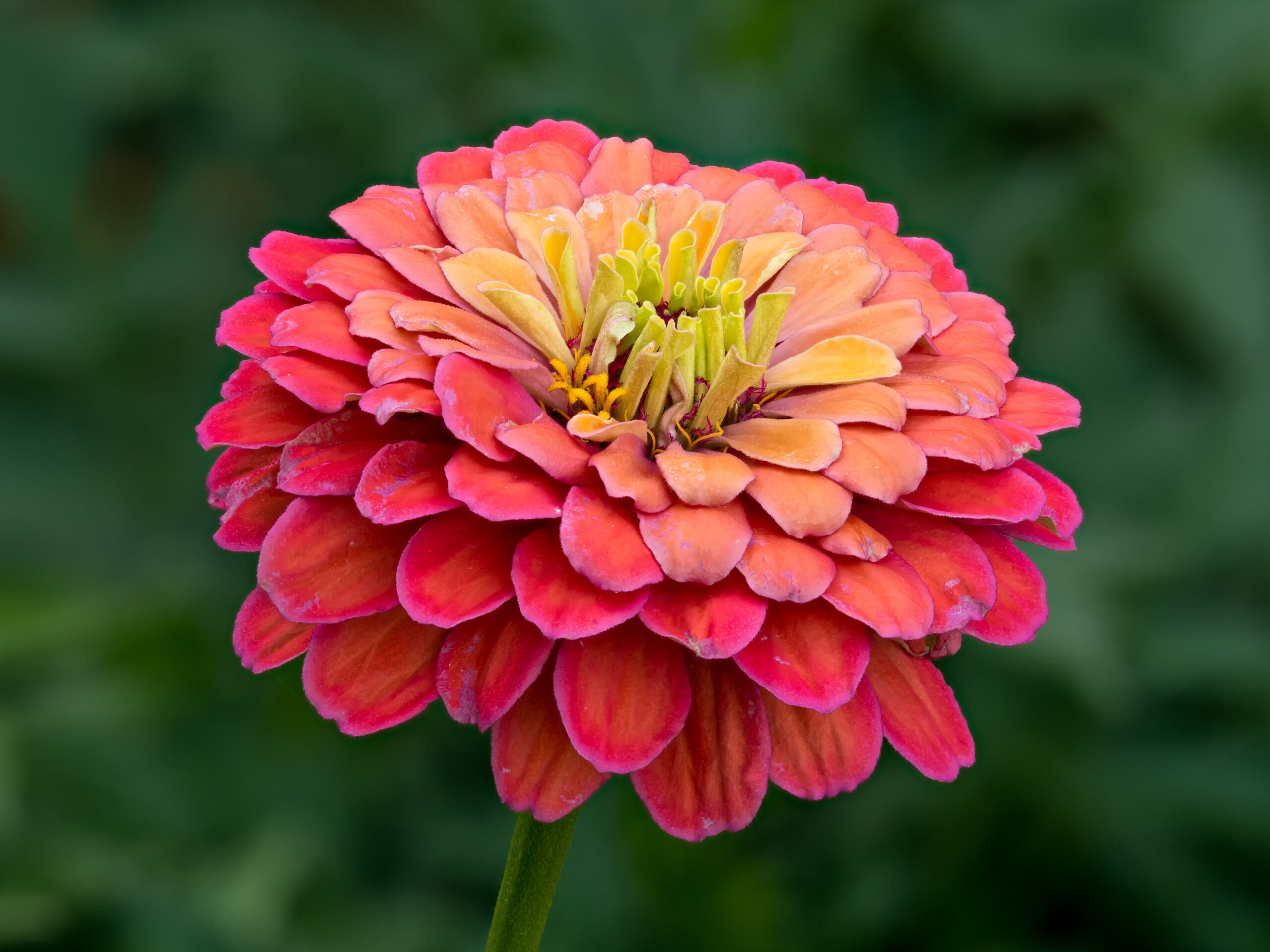 | Zinnia |
Best Annuals that Attract Hummingbirds
1. Cape Fuchsia

The Cape Fuchsia, or Phygelius capensis in Latin, is a member of the Scrophulariaceae family of flowering plants.
The name of this South African shrub, which may reach heights of 3 to 6 feet, was inspired by the Cape of Good Hope in Africa.
The extended blooming period of the Cape Fuchsia is one of the reasons it is a desirable decorative plant.
Based on the kind, you’ll be able to admire its vibrant hues anytime from May to November.
Two-inch-long tubular varieties come in a range of colors, including peach, yellow, pink, red, and magenta, and all rest neatly on their own stems when not in use.
It doesn’t matter what kind of soil you put Cape Fuchsia in, as long as it gets enough water and sunshine, this plant is low maintenance.
As it expands rapidly through subterranean stems, care must be taken to keep it in check should it smother other, more delicate vegetation.
It can withstand dry conditions, but you should water it often during hot spells.
When it becomes too hot, it’s a good idea to move it into the shade.
It blooms for an extended period of time, providing nectar for hummingbirds.
2. Hyacinth Bean
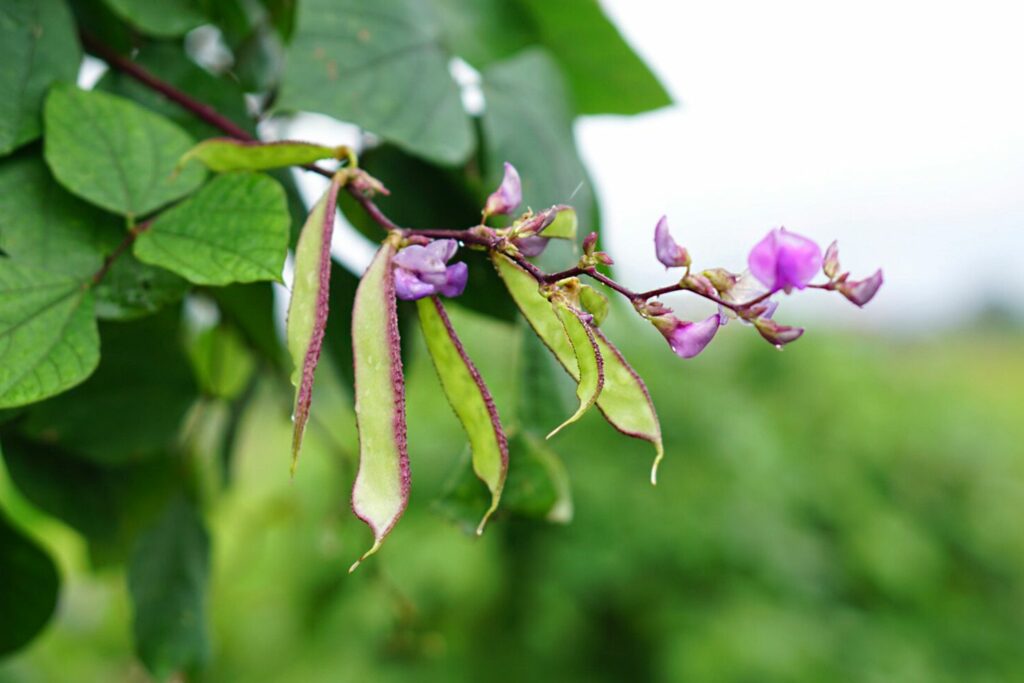
Lablab Purpureus, often known as the hyacinth bean, is a kind of bean vine that belongs to the Fabaceae family.
While it has its origins in Africa, it is currently mostly grown and consumed in Asia, where it goes by names like Egyptian Bean, Indian Bean, Australian Pea, and bataw.
As a result of its attractive pinkish-lavender flowers and similarly eye-catching purplish seed pods, this plant is often employed as an ornamental, mostly in the United States.
Thomas Jefferson’s nurseryman, Bernard McMahon reportedly sold it to Jefferson in 1804; the bean is also known as the Jefferson Bean.
Seeds of Hyacinth Beans are best planted in the garden in the springtime, when the weather is mild, to provide the highest possible bloom yield.
Hence, more blooms and vines will result from this.
Hyacinth bean vines, when properly supported by trellises and other means, may reach heights of up to 24 feet.
Summer and autumn are prime times for flowering.
They cluster along the stems and may be any of many different colors, including pinkish, white, purple, and lavender.
As soon as the blooms fade, the seedpods take center stage, and they are just as attractive as the blossoms.
These purple, elongated pods contain two to three toxic seeds and should not be consumed.
These purple blossoms are surprisingly minimal maintenance and a favorite of hummingbirds.
Enough sunshine, the proper kind of support to direct the vine, and consistent watering of young plants prior to becoming rooted are all that are required.
If you live in an area with warm winters and summers, you may treat them as perennials and save some seeds from sowing again next year; otherwise, consider them annuals and discard them.
3. Salvia
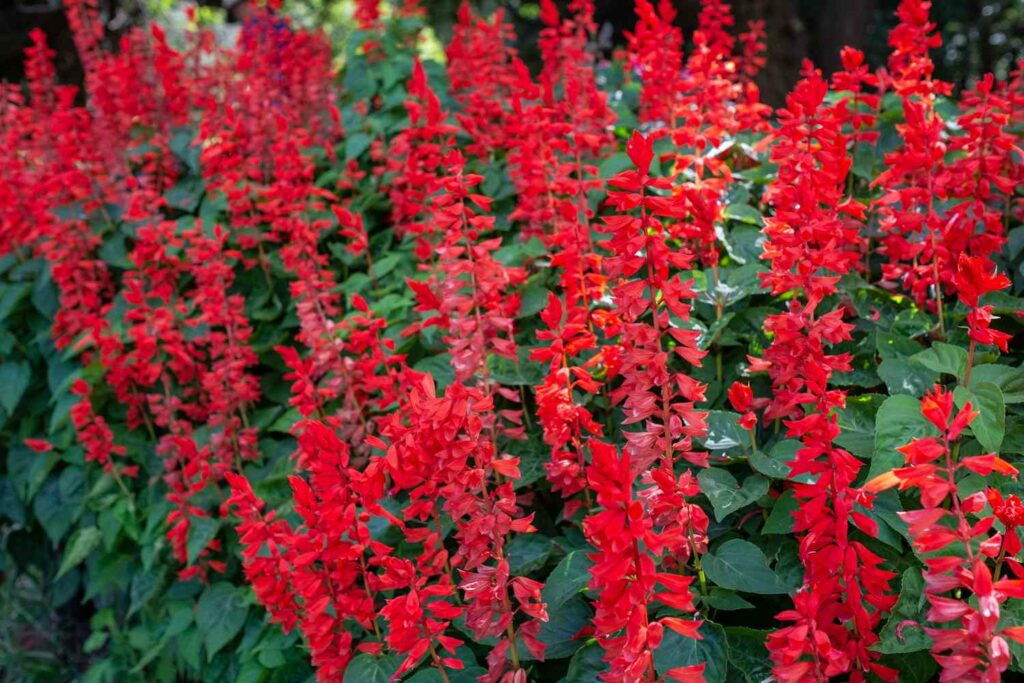
Hummingbirds love Salvias, and there are more than a thousand different species of these mint family members to select from.
They can withstand dry conditions and need little maintenance.
When hummingbirds and salvias co-evolved in the Americas, hummingbirds learned to use their long bills to open the flower’s trapdoor, releasing pollen over their heads in exchange for the flower’s sweet nectar.
All through the warmer months, they bloom profusely with tubular blooms that attract hummingbirds.
Several native salvia species thrive in the hot, dry conditions typical of the South.
While salvias can withstand high temperatures and dry conditions, they nevertheless need to be watered deeply once a week.
In addition to their annual form, there are also perennial sage plants that may be produced.
Leave blossoms on at the end of the season so they may reseed, but deadhead them over the summer to promote new blooms.
Choose Salvias with brightly colored blooms like red, pink, or orange.
Although native plants are ideal, the range of hummingbirds and the nectar they can find may be expanded by planting European Salvias, which are hardier and can thrive farther north.
4. Impatiens
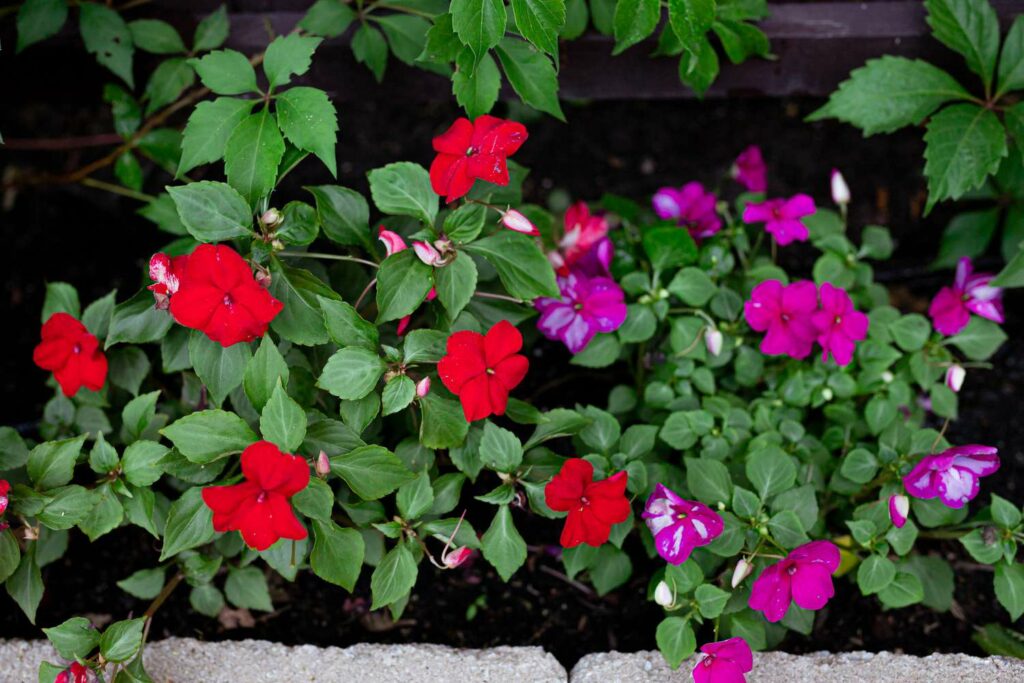
Annuals like Impatiens, with their vivid colors and short flower stalks, are perfect for bringing life to shaded regions while also luring in a variety of winged creatures.
Hanging them on your porch, which provides the ideal conditions of wet, well-draining soil and dense shade, is another option.
Typically, a thick mat of leaves and blossoms is formed from plants purchased in trays from nurseries and placed close together.
Because of how long it takes for the plants to bloom, the seeds may be harvested and started inside ten weeks before the final frost.
It is also possible to take cuttings in the autumn and nurture them inside until the threat of frost has passed.
5. Nasturtiums

Insectivorous nasturtiums draped in hanging baskets attract hummingbirds with their sweet nectar and deep, trumpet-shaped blossoms.
Both trailing and shrub varieties exist, and both are produced as annuals.
The seeds should be planted outside immediately after the last frost, and they will need regular watering and deadheading throughout the growing season.
6. Cypress Vine
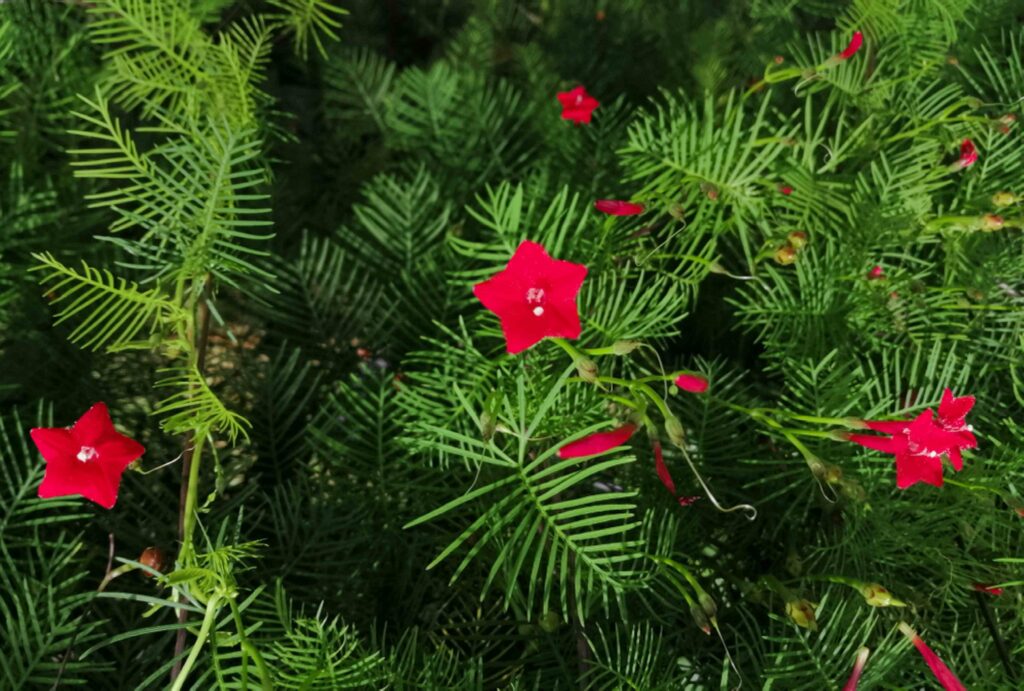
The bindweed Convolvulaceae family, of which Cypress Vine is a part, is native to tropical regions of South America.
Its scientific name is Ipomoea quamoclit.
It has subsequently become a naturalized species in numerous regions, especially the tropics.
Used for its decorative qualities, the Cypress Vine is a tropical perennial in warmer climates but a hardy annual in colder zones.
Despite its fragile-looking blooms and leaves, this plant is designated an invasive species in several states because of its rapid growth and its potential to crowd out native species and damage neighboring buildings.
It’s important to prune the plant annually to prevent it from self-seeding.
Yet, it is still among the most effective vines in luring hummingbirds.
The Cypress Vine, whose blossoms are fashioned like a star, is also known as the “Star of Bethlehem” and the “hummingbird vine” due to the large number of hummingbirds that visit the plant to feed on its nectar.
The scarlet blossoms of the Cypress Vine look stunning against the silvery threadlike foliage.
Arbors, pergolas, chain-link fences, and deck posts that get full light are ideal places for them to climb and spread.
Planting Cypress Vines requires some caution since, if left unchecked, they may quickly take over the garden.
If they cling to neighboring plants for support, they may develop horizontally rather than vertically.
The idea is to gently wrap the stems all-around support and trim them or guide them in the desired direction.
Yet, they are quickly damaged if their framework is removed.
Keep in mind that eating any part of this plant, particularly the seeds, may be fatal for humans and other animals.
7. Mandevilla
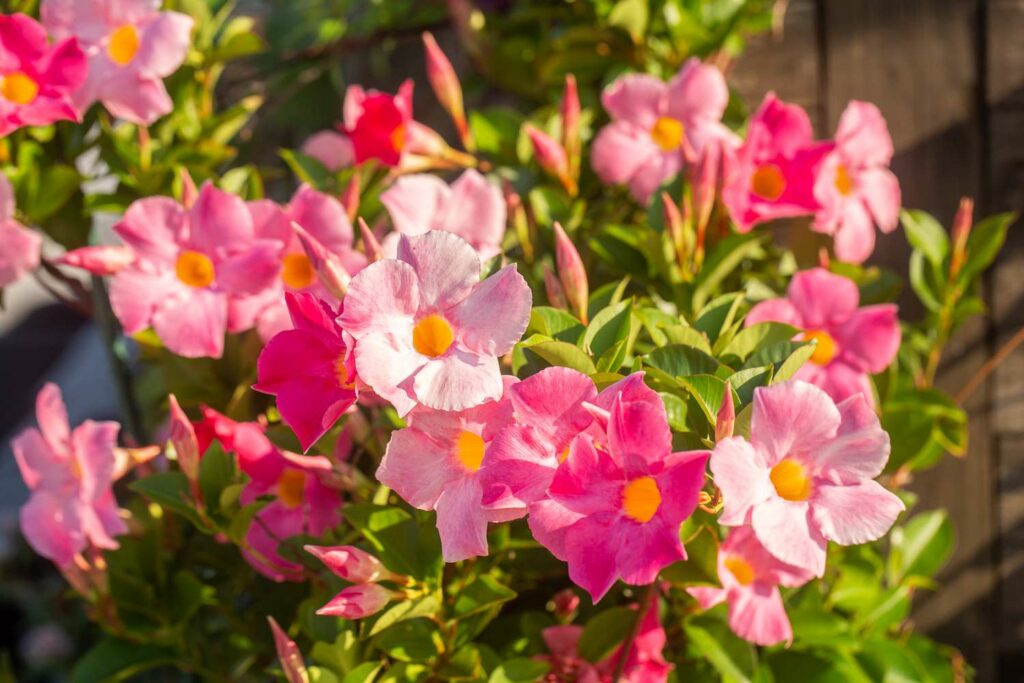
A group of flowering vines native to the tropics and subtropics, the Apocynaceae family includes the species known as Mandevilla.
Native to the southern United States, South America, and Mexico, Mandeville is also known by the names dogbane, rock trumpet, and Dipladenia.
Most Mandevilla species are climbers with enormous, beautiful, fragrant blooms blooming from late spring through late summer, sometimes extending into the autumn in moderate climates.
Their white, pink, and crimson blossoms contrast well with arbors, trellises, and other garden structures.
Hummingbirds and many other pollinators are drawn to the blooms because of their vibrant colors and unique tube form.
Mandevilla may be cultivated in both ground containers and vertical gardens.
They may also be grown in containers or planted directly in the ground near a fence or other support structure.
Plants of this kind do best in bright, indirect light and wet soil; however, in cooler weather, you may get away with less watering to prevent the roots from decaying.
Mandevillas may be kept in bloom and healthy growth by, among other things, being repotted annually.
Mandevilla thrives best when its soil and container are regularly refreshed to support its expanding root system.
It’s important to use caution, however, since Mandevilla is poisonous.
Its milky sap is irritating to the skin, and although they are not completely toxic, pets might have had an adverse response if they eat any portion of the plant.
8. Petunias
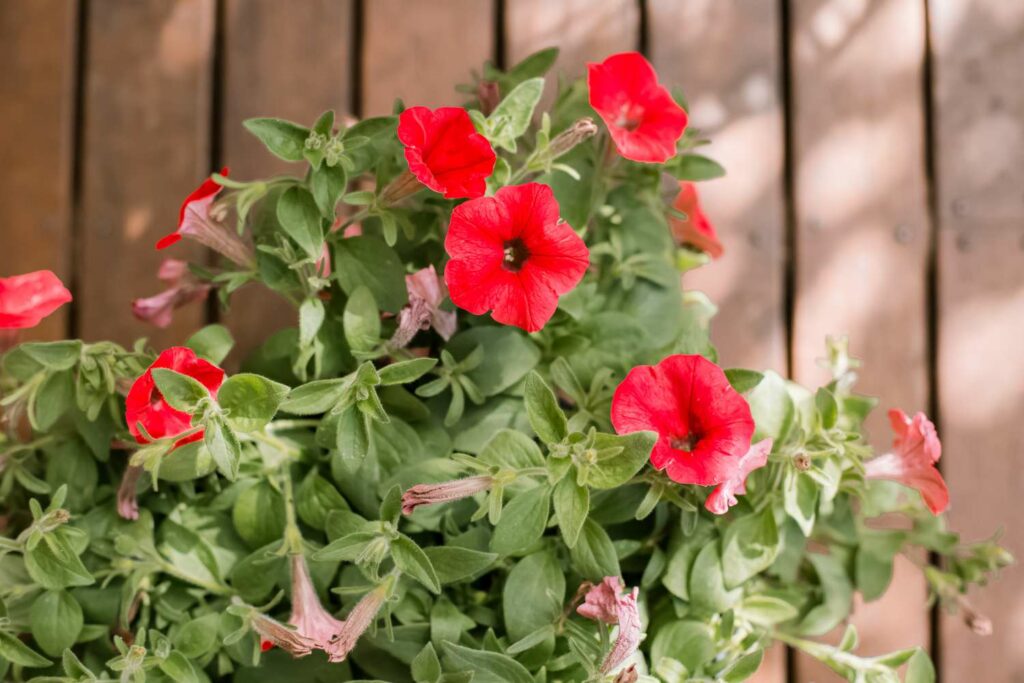
These annuals are bright and low-cost, and they thrive in containers on a sunny windowsill.
They produce a ton of blooms that look great, spilling over the sides of vases.
They can be grown from seed but are more commonly purchased as small plants in flats from a nursery.
Plant seeds indoors ten weeks before the last frost date, and then move them outside once the danger of frost has passed.
Petunias can withstand high temperatures, but they still need to be watered roughly once a week.
Thin, leggy growth can be avoided by cutting them back to about half their original height.
If you want to attract hummingbirds, you should plant flowers in the red and pink spectrum.
9. Canary Creeper
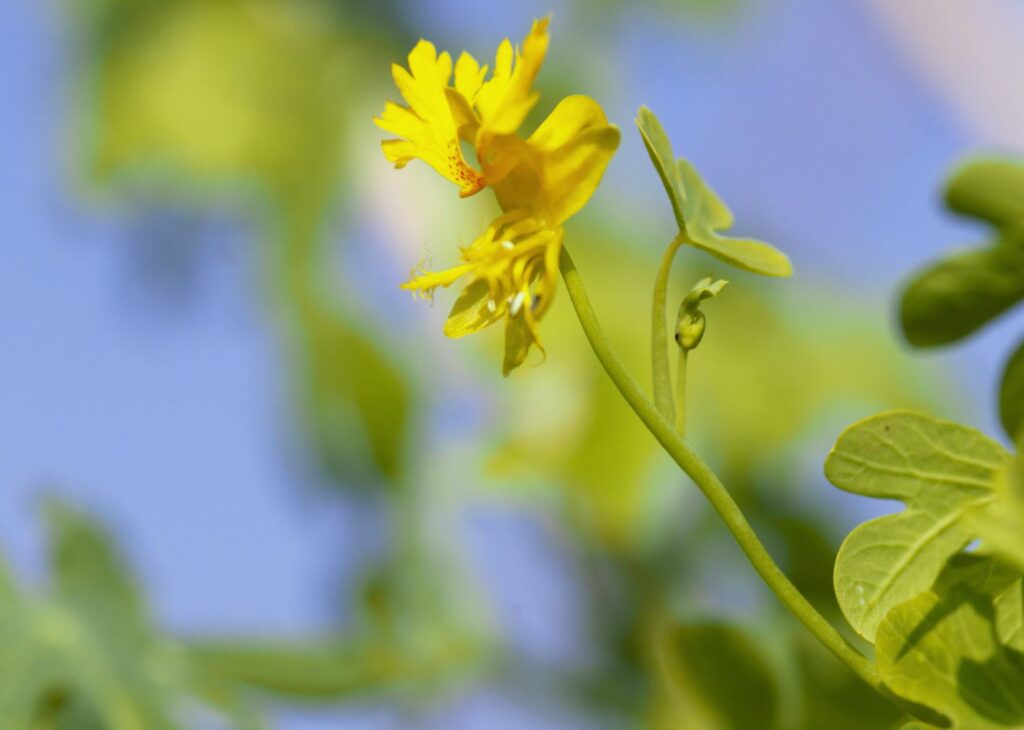
Canary Creeper, or Tropaeolum peregrinum in Latin, is a flowering vine in the Nasturtium family that is endemic to Peru and Ecuador.
Canary nasturtium is another name for this plant because of its proximity to the Canaries.
Because it cannot withstand frost, even in mild climates, it has risen like an annual ornamental.
Despite what the name might imply, this plant is neither slow nor slow-growing.
The Canary Creeper, when grown in full sunlight, can reach a height of 13 feet in just one year.
The Canary Creeper’s flowers are a major attraction for hummingbirds, making it a top choice among vines.
Their namesake comes from the fact that their top two large, yellow petals are fringed like a canary’s wings, and their bottom three petals are smaller and spurred.
A few red dots may be seen at the petals’ bases. Small, green, and 5-lobed such as the fingers of a hand, their leaves are attractive, too.
The Canary Creeper’s blossoms may survive until October if they have enough sunshine and water.
They will quickly climb a trellis or arbor if given the opportunity.
It’s very easy to cultivate them in hanging baskets. As opposed to other climbing vines, they may be planted in close proximity to other plants without concern of smothering them.
10. Cleome
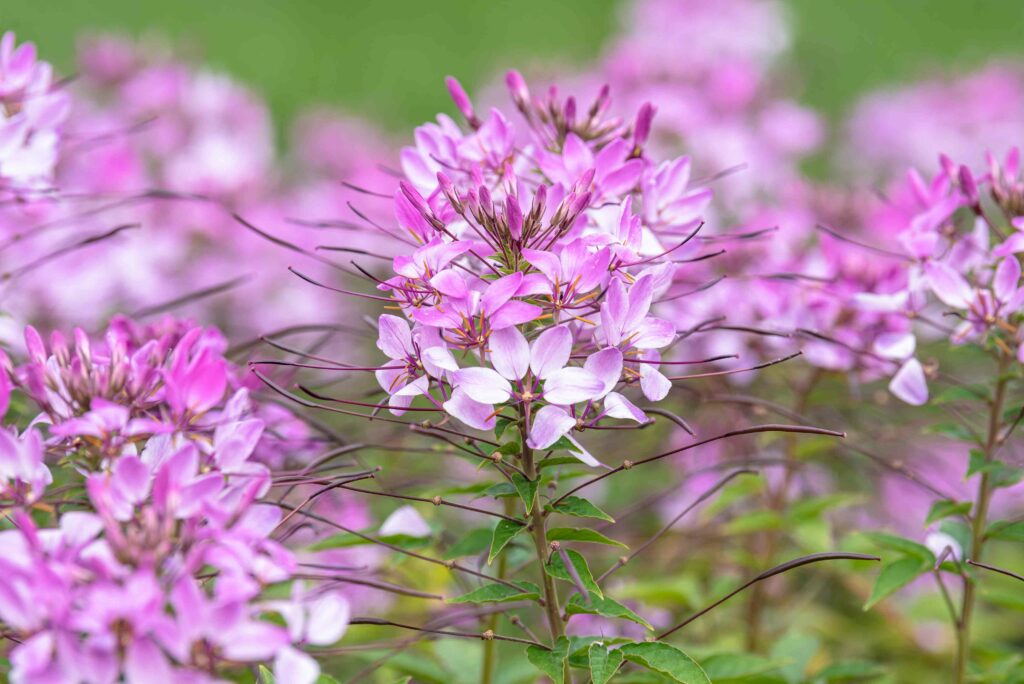
Cleomes, often called spider flowers and spider plants, are either annual or perennial herbaceous plants, based on where they grow.
The spidery-looking stamens in their petals give them their common name.
There are several types of cleomes, so you’re sure to find one that works in your garden.
As an example, some cleomes possess thorns, whereas others don’t. Some may reach heights of six feet, while others top out at two.
Hummingbirds and bees are drawn to their similar purple, pink, and white blooms, which may or may not have a perfume.
Cleomes need very little maintenance.
All that is needed is full sunshine and soil with good drainage.
After the plants are well-established, you may water them less often.
The faded blossoms will eventually be replaced by delicate green seedpods.
They ripen to a brown and scatter their seeds when they’re done.
In the garden, Cleomes may be left to self-seed if desired, or their seeds saved and used to propagate different plants.
11. Flowering Tobacco
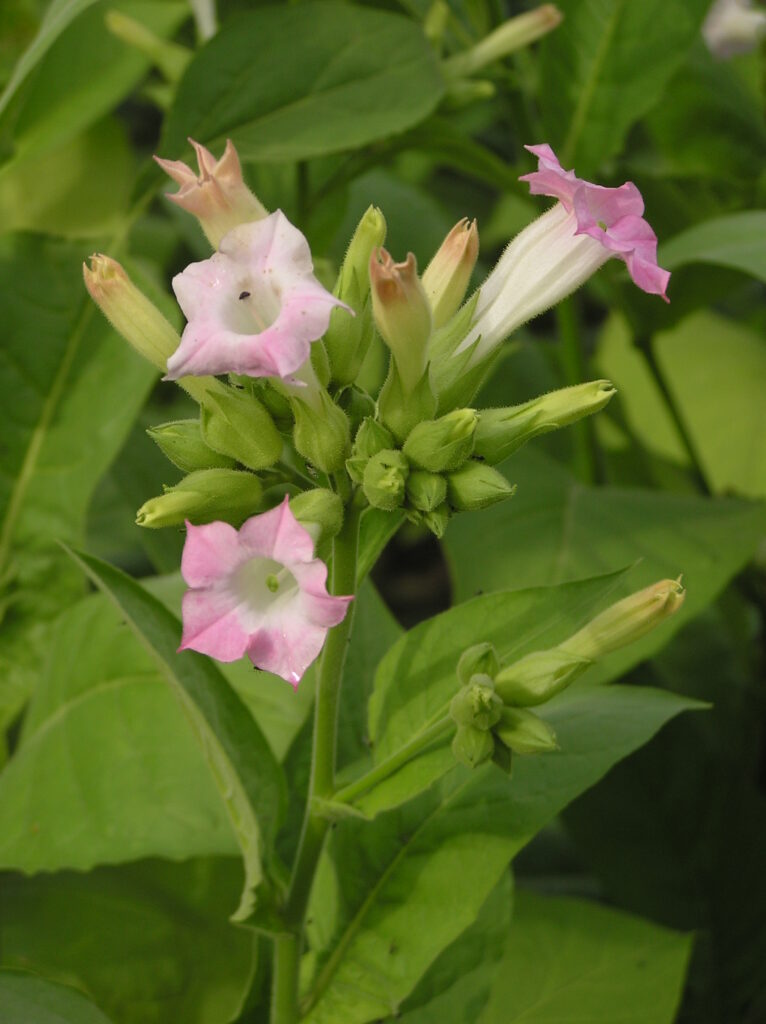
Tobacco plants with flowers are members of the herbaceous plant family Nicotiana.
Several types of this plant, a cousin of the real tobacco plant, are often planted as ornamentals.
Popular and easy-to-grow options for growing fragrant blooming tobacco plants in the yard are Nicotania sylvestris and Nicotiana alata.
At night, they release a delicate jasmine scent.
The broad, rectangular leaves of the Nicotiana sylvestris are topped with a central flower spike that may reach heights of several feet.
From June until the first frost, you may enjoy the sight of numerous tubular, pendant, white, or creamy blooms.
Even though the stems of Nicotiana alata plants appear long and elegant, their tubular flowers are still borne in clusters.
White, star-shaped blooms bloom at night and provide a lovely scent.
These blooming tobacco varieties may be planted and grown with relative ease as long as they are given enough sunlight or partial shade and soil that drains properly.
More than that, the tube-shaped blooms and sweet scent of these plants are a major draw for hummingbirds.
As they are annuals, however, their longevity is uncertain.
They also self-seed, so you can keep enjoying them next year.
Ensure they are kept safe from the elements, especially the cold and the heat.
12. Morning Glory
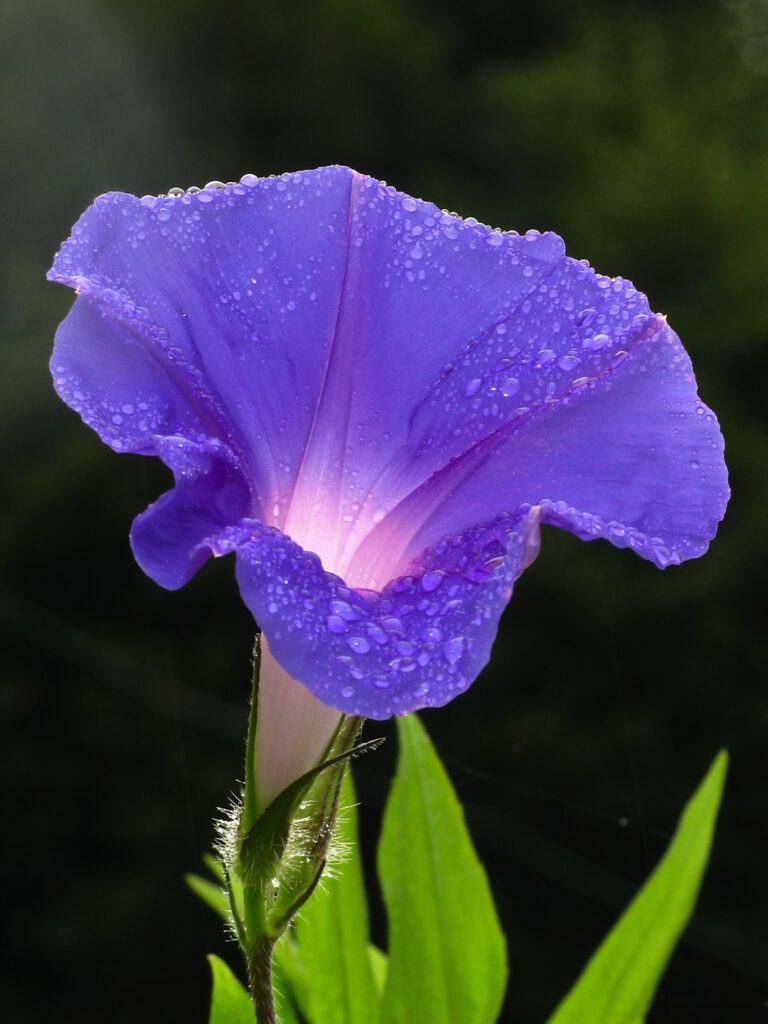
Morning Glory is a common name for more than a thousand different kinds of blooming plants in the family Convolvulaceae.
The blooms of the Morning Glory open before sunrise and shut again when the day becomes too hot, thus the name.
Several members of the Morning Glory family, including Ipomoea alba, are nocturnal bloomers.
Morning glories have large, showy blooms, fast-growing vines, brilliant green leaves, and the ability to thrive in sandy or arid soil.
They may be trained to climb on a trellis or entwined around an arbor for decorative purposes.
Ipomoea purpurea, a kind of Morning Glory, is a great choice if you want to attract hummingbirds.
It opens its heart-shaped leaves in the morning and closes them again in the afternoon, and it blooms with beautiful purple trumpet-shaped flowers.
They flower from the beginning of summer till the beginning of autumn.
Depending on the environment, morning glory may either be an annual or a perennial vine.
To ensure maximum bloom, Morning Glories need at least 8 hours of sunshine every day.
If morning glories are not managed properly, the fast-growing vines can quickly become an invasive species.
Children and pets should not be allowed to surround the plant because its seeds are poisonous if eaten.
13. Zinnia
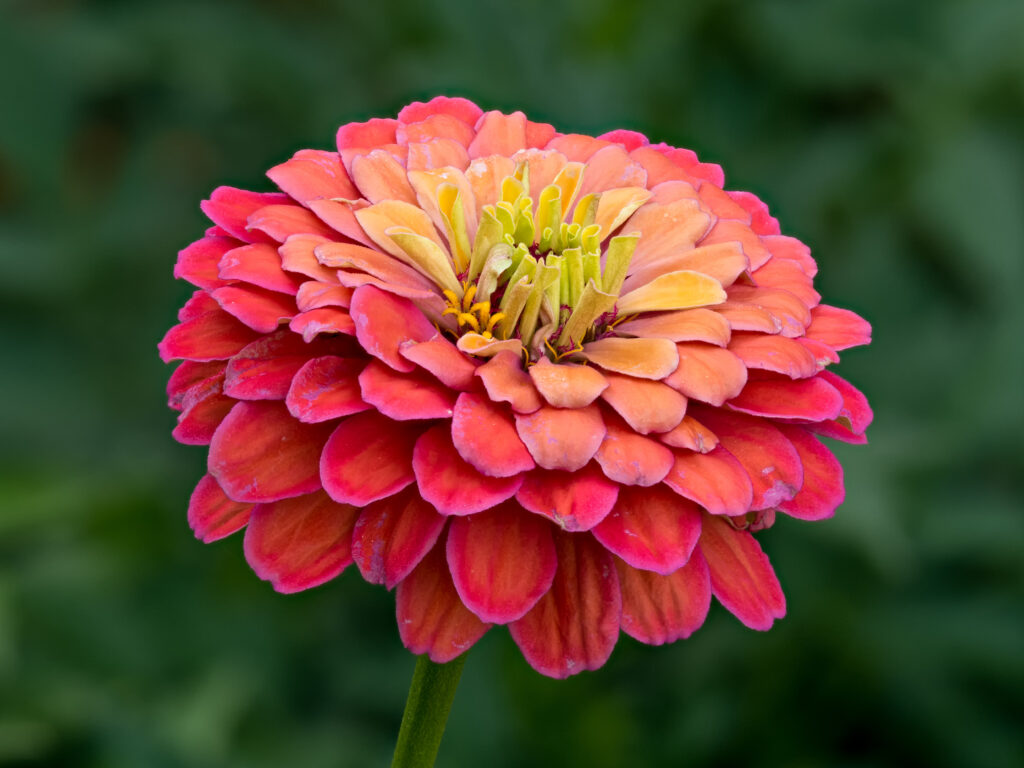
Native to the dry grasslands and scrub of North America, zinnias are flowering shrubs.
They are members of the Heliantheae tribe of the Asteraceae family, which also includes the more common daisy species.
According to their petal structure, zinnias may be divided into three broad categories.
The petals of single-flowered zinnias are arranged in a single row, revealing the flower’s inner core.
Zinnias with two sets of petals have a blank spot in the middle.
Zinnias with semi-double blooms are arranged in dense clusters with open centers.
The Zinnia elegans is a perennial favorite for gardens and patio pots because of its sturdy stems and vivid color palette.
It grows to a height of 3 feet, has an abundance of brightly colored flowers, blooms from early summer till frost, and draws in pollinators such as butterflies and hummingbirds.
While zinnias are simple to cultivate, they are not fond of being relocated and must be planted in their final locations on the spot.
In contrast, if they are well-established in full sun and well-drained soil, you may look forward to a lengthy period of time during which their brilliant blossoms provide visual delight.
Conclusion
In conclusion, adding the right annuals to your garden can help attract hummingbirds and provide a beautiful display of flowers at the same time.
From the vibrant red blooms of the Salvia to the delicate white flowers of Nicotiana, there are many options to choose from.
By incorporating these annuals into your garden, you can create a welcoming environment for hummingbirds and enjoy the sight of these fascinating birds up close.
So go ahead and try planting some of these 13 best annuals that attract hummingbirds, and get ready to witness the magic of nature in your own backyard.
FAQ
When is the best time to plant annuals for hummingbirds?
Annuals can be planted in the spring after the last frost, or in the fall before the first frost. This will ensure that the plants have enough time to establish themselves before the heat of summer or the cold of winter.
How do I care for annuals that attract hummingbirds?
Annuals that attract hummingbirds require regular watering, fertilization, and deadheading to encourage continued blooming. They also benefit from being planted in well-draining soil and in a location that receives full to partial sun.
What other plants can I add to my garden to attract hummingbirds?
In addition to annuals, you can also add perennials, shrubs, and trees to your garden to attract hummingbirds. Some popular options include Bee Balm, Butterfly Bush, and Red Buckeye.
Can I attract hummingbirds without using flowers?
While flowers are the primary way to attract hummingbirds, you can also provide a source of nectar through hummingbird feeders. Just make sure to use a solution of four parts water to one part white granulated sugar, and avoid using honey or food coloring.
What else can I do to create a hummingbird-friendly garden?
In addition to planting hummingbird-attracting plants, you can also provide a source of water such as a bird bath or fountain, and avoid using pesticides or herbicides in your garden. Creating a diverse and natural environment will help to attract and support hummingbirds and other wildlife.
Last Updated on May 9, 2023 by Lily Aldrin
